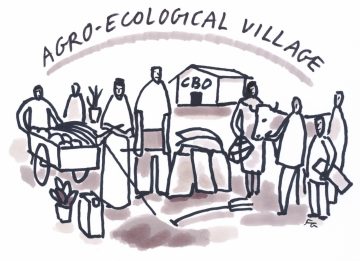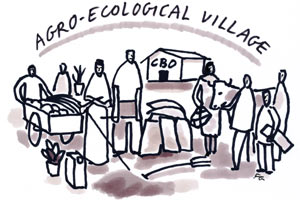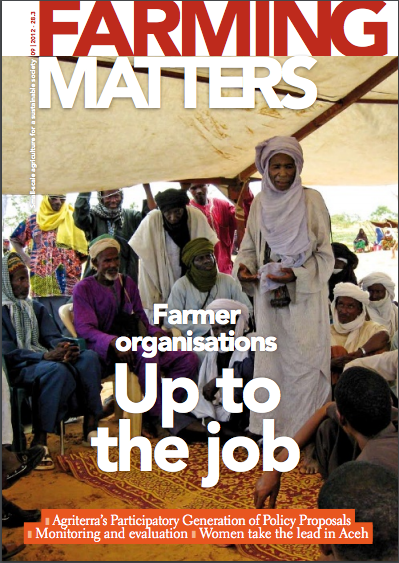How can individual households within a community work together to address challenges of food security and rehabilitate the natural resource base? Together with its partners, Resource Efficient Agricultural Production Canada (REAP-Canada) has developed an approach called the Agro- Ecological Village (AEV), which attempts to reach this goal. The AEV is a participatory approach to rural development that invests in skill-building and community organisation, incorporating community input and planning into each step. This ensures that activities are flexible and revolve around the community’s interests and opportunities.
REAP-Canada and its partners work with rural farming communities in developing countries that endure a host of environmental challenges, such as droughts, deforestatio

n and soil degradation. Farmers in these areas suffer from low yields and are vulnerable to climate change.
“In essence, they need an overhaul of their agricultural systems,” says Meredith Kushnir, the International Program Coordinator. Using the AEV approach, communities can become more self-reliant and resilient.
“Our projects help them to become more self-sufficient through ecological farming and increased on-farm diversity for both their immediate food needs as well as for increased income generation.”
The AEV is a holistic approach to rural development that is rooted in the organisation and empowerment of communities. The starting point of any AEV project is to organise existing groups, such as farmers’ organisations or women’s groups, into one community-based organisation (CBO) and get them talking about the challenges they face and how to address them collectively.
“REAP-Canada is an independent, non-profit organisation that has been working since 1986 to develop ecological agriculture both in Canada and abroad. The AEV model was developed in 1999 in the Philippines with local partners. Since then, AEV projects have also been implemented in China, Gambia and Senegal.
For more information on the project in the Philippines see an article in LEISA Magazine 16.4 (December 2000). To find out more about the approach and how to use it, visit www.reap-canada.com or contact Meredith Kushnir at mkushnir@reap-canada.com.”
These CBOs play a key role in coordinating farmer-to-farmer training, distributing ecological farm materials and equipment, and organising community-wide programmes such as seed saving, value-addition, sustainable poultry and organic fertiliser production. Some farmers will volunteer part of their farm as a “learning farm” for the community, where they test, breed and multiply improved varieties of field crops, vegetables and livestock and test ecological farming techniques, such as intercropping strategies.
“This bottom-up training process allows local farmers to take the lead in community learning and capacity building and builds on what farmers themselves know. They focus on efficiently using all the resources available in their community instead of relying on expensive imported inputs.”
The AEV approach develops these skills in a community, as these form the basis for continuing with the development process beyond the lifespan of the project.
REAP-Canada and local partners work together to develop the specific features of an AEV project within a certain region. Even though the main pillars remain the same, AEV can be adapted to the approaches of partner organisations and the priorities of specific rural communities, which is why it can be carried out in very different contexts, from Gambia to the Philippines. Ms Kushnir concludes: “The AEV’s adaptability to the local context and its roots in bottom-up farmer-led processes are what makes this approach so successful.”
Text: Thomas de la Rue


